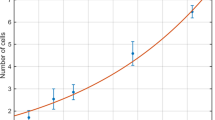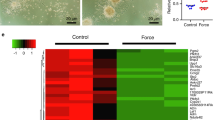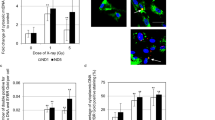Abstract
The response of EMT6 mouse tumour cells to ICRF 159, both with and without X-radiation, has been measured during the life of monolayer cultures. The cytotoxic effect of ICRF 159 was found to be proliferation-dependent. Flow cytofluorimetry studies of cell cycle distribution showed that ICRF 159 prevented cell division while allowing DNA synthesis to continue. This anti-mitotic action and the cytotoxic effect of the drug were found to be closely related. Increased sensitivity to X-radiation was observed in cultures pretreated for 24 h with 200 microgram/ml ICRF 159 In exponential and early plateau cultures this was seen as a reduced shoulder of the survival curve. In late plateau cultures there was no apparent reduction of the shoulder, but an increase in slope.
This is a preview of subscription content, access via your institution
Access options
Subscribe to this journal
Receive 24 print issues and online access
$259.00 per year
only $10.79 per issue
Buy this article
- Purchase on SpringerLink
- Instant access to full article PDF
Prices may be subject to local taxes which are calculated during checkout
Similar content being viewed by others
Rights and permissions
About this article
Cite this article
Taylor, I., Bleehen, N. Changes in sensitivity to radiation and ICRF 159 during the life of monolayer cultures of EMT6 tumour line. Br J Cancer 35, 587–594 (1977). https://doi.org/10.1038/bjc.1977.92
Issue date:
DOI: https://doi.org/10.1038/bjc.1977.92
This article is cited by
-
The cytokinetic and cytotoxic effects of ICRF-159 and ICRF-187 in vitro and ICRF-187 in human bone marrow in vivo
Investigational New Drugs (1983)



